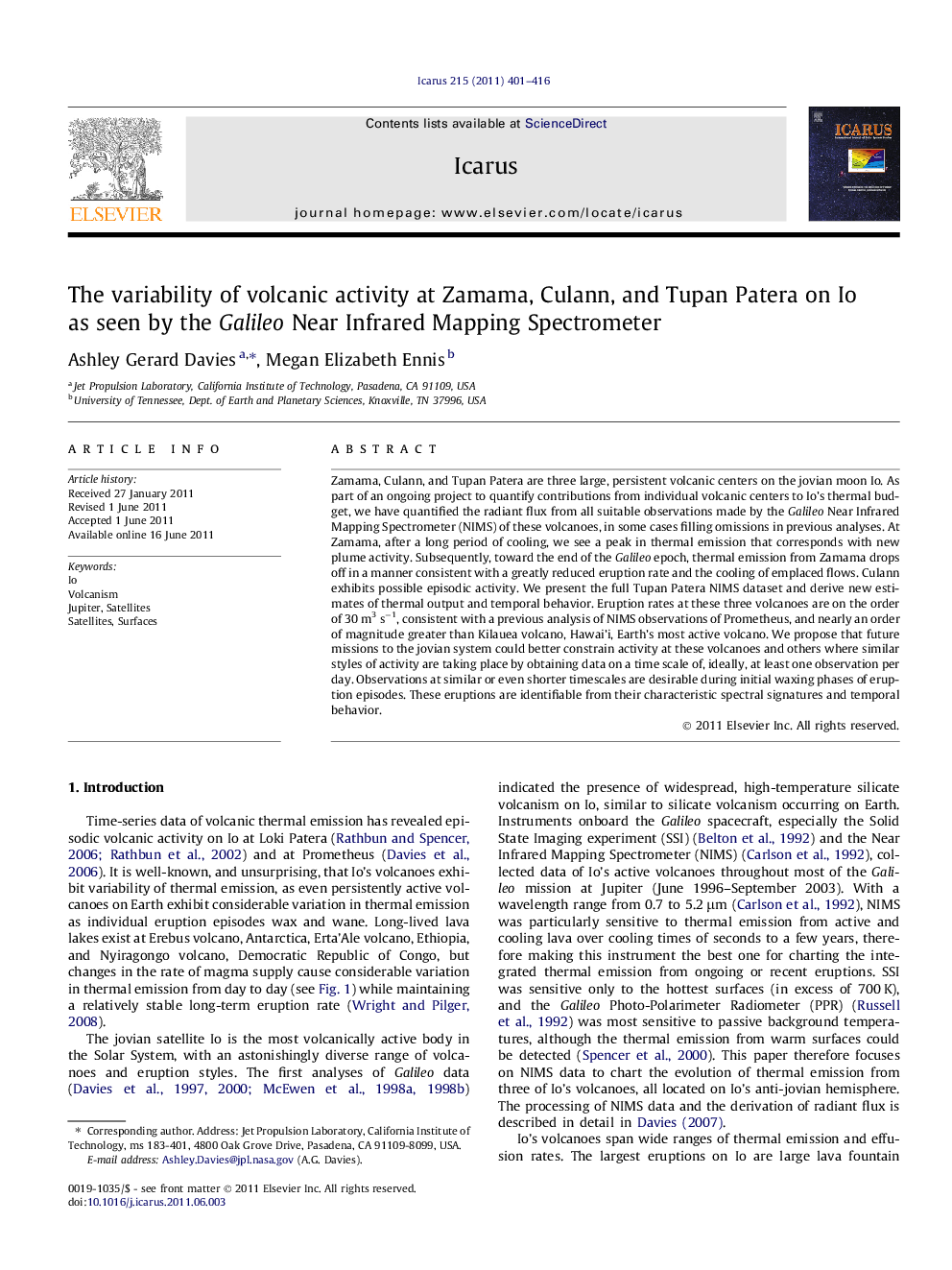| Article ID | Journal | Published Year | Pages | File Type |
|---|---|---|---|---|
| 1773993 | Icarus | 2011 | 16 Pages |
Zamama, Culann, and Tupan Patera are three large, persistent volcanic centers on the jovian moon Io. As part of an ongoing project to quantify contributions from individual volcanic centers to Io’s thermal budget, we have quantified the radiant flux from all suitable observations made by the Galileo Near Infrared Mapping Spectrometer (NIMS) of these volcanoes, in some cases filling omissions in previous analyses. At Zamama, after a long period of cooling, we see a peak in thermal emission that corresponds with new plume activity. Subsequently, toward the end of the Galileo epoch, thermal emission from Zamama drops off in a manner consistent with a greatly reduced eruption rate and the cooling of emplaced flows. Culann exhibits possible episodic activity. We present the full Tupan Patera NIMS dataset and derive new estimates of thermal output and temporal behavior. Eruption rates at these three volcanoes are on the order of 30 m3 s−1, consistent with a previous analysis of NIMS observations of Prometheus, and nearly an order of magnitude greater than Kilauea volcano, Hawai’i, Earth’s most active volcano. We propose that future missions to the jovian system could better constrain activity at these volcanoes and others where similar styles of activity are taking place by obtaining data on a time scale of, ideally, at least one observation per day. Observations at similar or even shorter timescales are desirable during initial waxing phases of eruption episodes. These eruptions are identifiable from their characteristic spectral signatures and temporal behavior.
► We have analyzed Galileo NIMS data for Io volcanoes Zamama, Culann and Tupan Patera. ► We have quantified thermal emission and estimated effusion rates. ► Volcanic activity at these locations is similar to that at Prometheus, and is likely fed from shallow magma chambers. ► Future Io missions should obtain daily observations of individual volcanoes to constrain eruption style and evolution.
